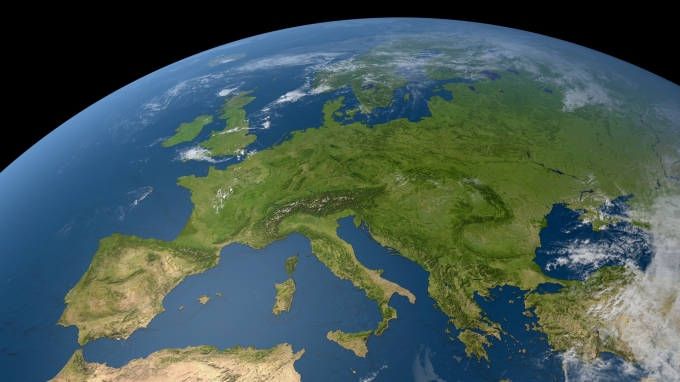Summer cooling: Scientists calculate northern Europe’s climatic history
In cooperation with a team of international scientists, Dr. Eduardo Zorita and Dr. Sebastian Wagner of the Helmholtz-Zentrum Geesthacht reconstructed the climatic history of northern Europe over the last 2,000 years. In their computer simulations, the two palaeoclimatologists included the changes of the earth’s orbit around the sun, controlling long-term climate conditions. The result of the simulation: summer temperatures in the European northern latitudes decreased by 0.6 °C in the last 2,000 years. However, the results presented in the study do not contradict the interpretation that the warming over the last decades can be largely ascribed to the emission of greenhouse gases.

The computer simulations from the Geesthachter scientists show a temperature drop of about 0,6 degree Celsius during Summer within the northern line of latitude in the last 2000 years. (picture: Fotolia/Thomas Bredenfeld)
Changes in the orbit of the Earth around the sun are responsible for this long-term temperature trend on a millennial time scale. This is due to the fact that the orbit of the Earth around the sun controls the spatial and seasonal distribution of solar radiation.
For instance, the point at which the Earth is closest to the sun was in July approx. 10,000 years ago; today it is in January. On a geological time scale, these fluctuations are the pacemaker for the transition between climatic warm and cold periods.
The evolution of temperatures can also be reconstructed from tree rings in Scandinavia, because the density of annual tree rings is a proxy for past temperatures. With the help of rings of old pines conserved in North Scandinavian lakes, the international team of scientists could verify the long-term cooling trend of northern European summers over the last 2,000 years, similar to the one calculated with the computer simulations: 0.3 °C per millennium.
This long-term trend is accompanied by short-term temperature fluctuations, for example, related to the 20th century warming as a result of the anthropogenic greenhouse effect.
The team of scientists from Germany, Finland Scotland and Switzerland published their results in the journal ‘Nature Climate Change’.
Contact
Institut for Coast Research
Phone: +49 (0)4152 87 1856
E-mail contactMax-Planck-Straße 1
21502 Geesthacht
